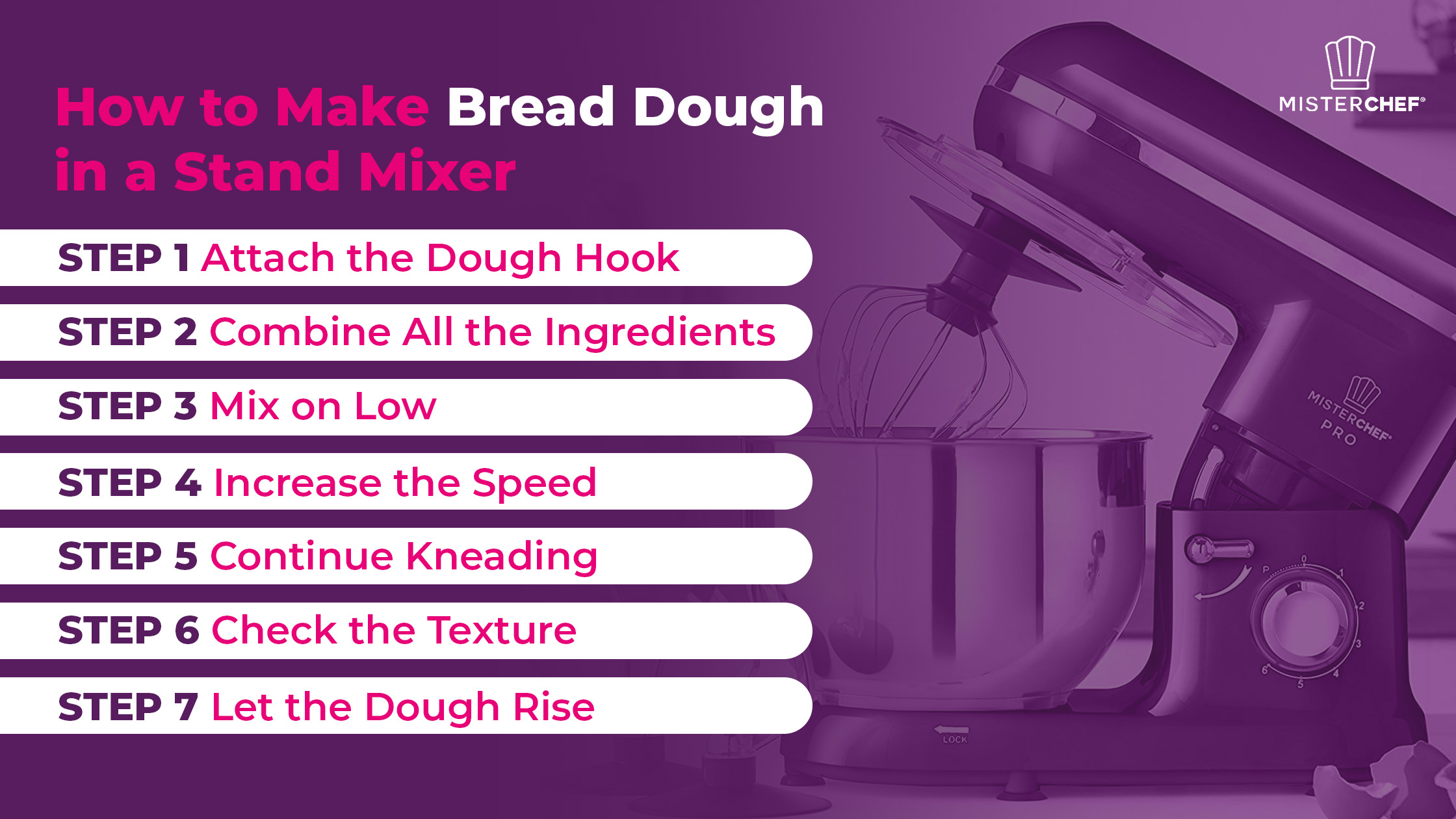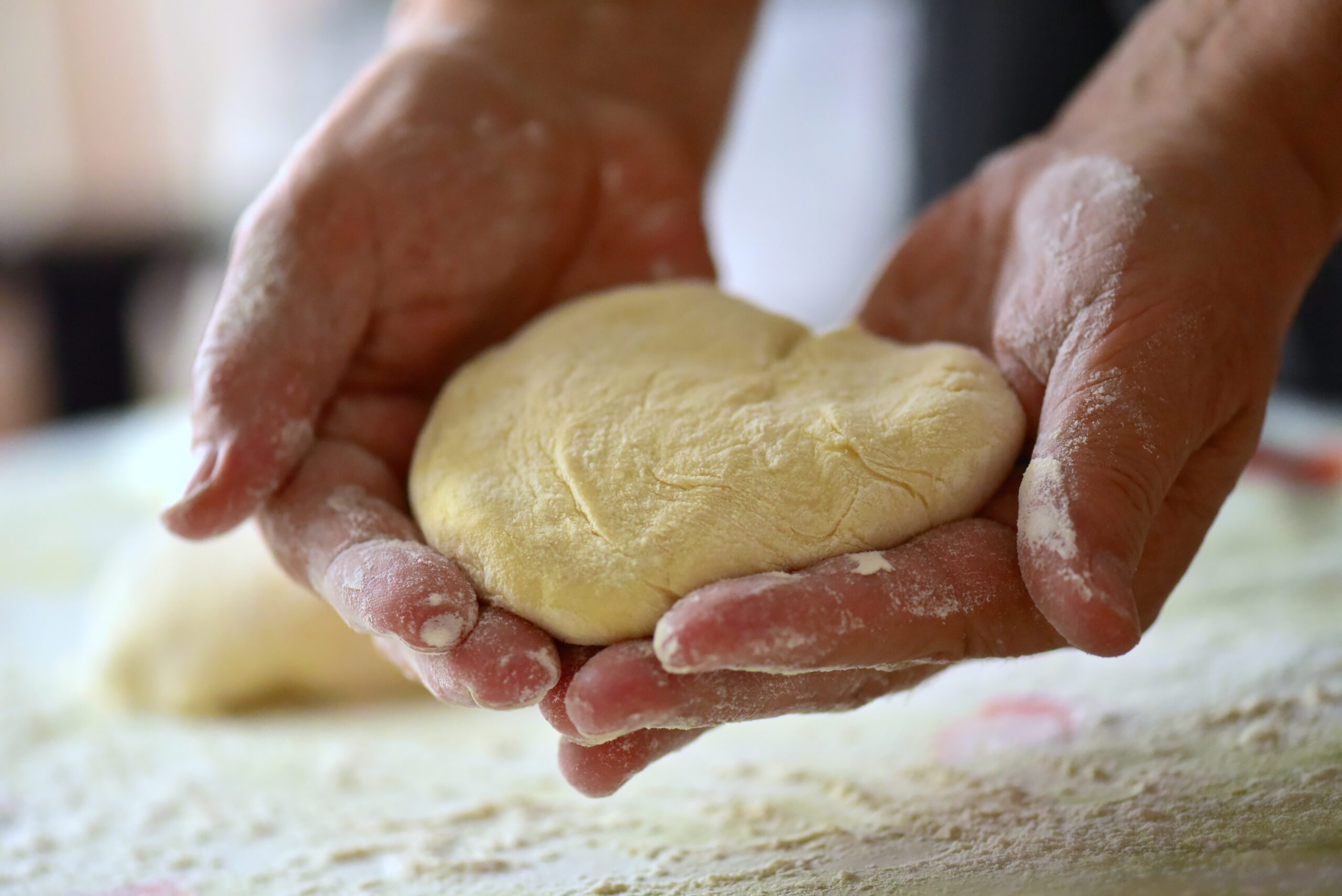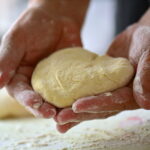Long before the convenience of modern bakeries and factory-produced loaves, baking bread at home was the norm. During this time, bread wasn’t just food; it was an art that resulted in loaves that were so soft, so fluffy, and so deliciously warm. Sounds amazing, right? Well, you can do it yourself. All you need to do is mix all the ingredients together, then knead until the dough forms. While many guides show you how to knead by hand, we’ll show you a simpler method using a stand mixer.
Will a Stand Mixer Give You the Same Results?
Absolutely! A stand mixer can actually make the process easier, especially for beginners. It does all the hard work of kneading for you, ensuring that your dough is perfectly mixed and aerated. This means you’re more likely to get that soft, fluffy texture we all love in homemade bread, with less effort.
How Long Will It Take?
The time it takes can vary based on the bread recipe, the flour type, and how much water you use, as doughs with more water are stickier and more challenging to work with. In general, if you’re making regular dough with all-purpose flour, yeast, and minimal water, the mixing and kneading part takes about 10 to 15 minutes. After that, the dough needs to rise, which usually takes about 1 to 2 hours. Finally, bread baking takes around 30 to 45 minutes. If you’re following artisan bread recipes, it will take a bit longer to prep the dough and bake it.
How to Make Bread Dough in a Stand Mixer

Using a stand mixer and bread machine to knead dough is a game-changer. Here’s a step-by-step guide to get you started:
Step 1: Attach the Dough Hook
Before you begin, make sure your stand mixer comes with a dough hook attachment. This hook is specially designed to mimic the kneading process, ensuring your dough gets the stretch and aeration it needs.
Step 2: Combine All the Ingredients
Start by adding your dry ingredients (like flour, yeast, and salt) to the mixer’s bowl. With the mixer off, use a spoon or whisk to lightly combine them. Then, add your wet ingredients (such as water, milk, or oil) according to your recipe.
Step 3: Mix on Low
Turn your mixer on to a low setting to start combining the ingredients. This helps prevent the bread flour from flying out of the bowl and ensures everything begins to mix nicely.
Step 4: Increase the Speed
Once the ingredients start to form a rough dough, increase the speed to medium. The dough should begin to pull away from the sides of the bowl and form a ball around the dough hook.
Step 5: Continue Kneading
Continue kneading yeast dough at medium speed for about 5 to 8 minutes. The exact time can vary depending on the recipe, but you’re looking for the dough to become smooth and elastic. It should also spring back slightly when poked.
Step 6: Check the Texture
If you’re dealing with sticky dough, you can add a little more flour, a tablespoon at a time. If it’s too dry and crumbly, add a bit more liquid.
Step 7: Let the Dough Rise
Once kneaded, remove the dough from the mixer and shape it into a ball. Place it in a greased bowl, cover it with a damp cloth or plastic wrap, and let it rise in a warm place until it doubles in size.
Can You Knead Bread Dough Without a Dough Hook?
Yes, you can. Just use the paddle attachment that usually comes with most stand mixers.
To start kneading dough, begin by combining your ingredients in the mixer bowl as usual. Then, use the paddle attachment on a low to medium setting to mix everything. Since the paddle isn’t designed for kneading, you’ll need to pay a bit more attention. You’ll want to stop the mixer and scrape down the sides of the bowl occasionally to ensure all ingredients are incorporated evenly. After mixing, you might have to knead the dough by hand on a floured surface to get the right texture.
How Can You Tell If You’ve Over-Kneaded the Dough?
Over-kneading happens more often with a stand mixer since it mixes the dough more vigorously than hand kneading. You can tell if the dough is over-kneaded if it feels tough and dense, starts to tear rather than stretch when you pull it, and doesn’t hold its shape. To fix over-kneaded dough, the best thing to do is let it rest. A longer resting period can help the gluten relax.
Summary
Making bread at home is a rewarding process. Using a stand mixer makes kneading easier, helping you get fluffy and tasty bread every time. Whether you’re using a dough hook or paddle attachment, make sure to keep an eye on the dough’s consistency to avoid over-kneading.
And if you’re looking for a stand mixer to make freshly baked bread, check out MisterChef. Our stand mixers are designed with the home baker in mind, combining power, versatility, and simplicity. Shop with us today.







